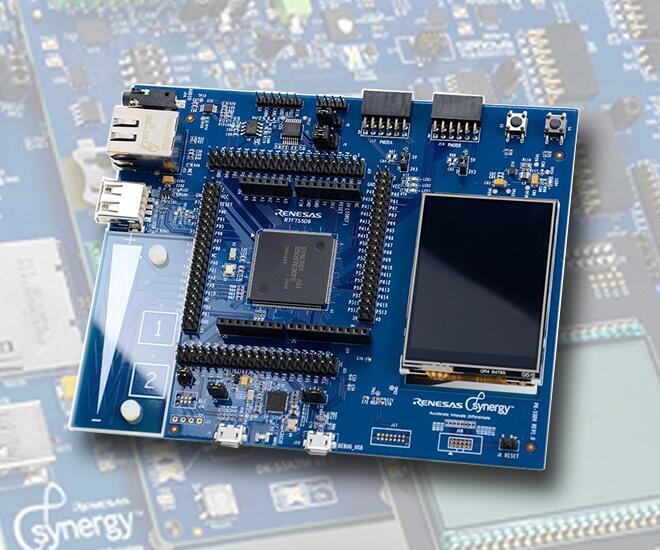Embedded platform adds Wi-Fi software, MCUs, tests
Article By : Renesas

Synergy Software Package v1.2.0 features integrated API, Wi-Fi framework, MCU series and documented SQA for a complete embedded platform.
Renesas has expanded its Synergy platform to include an application programming interface (API), leveraging a full Synergy Software Package (SSP) built around the Express Logic X-Ware.
This SSP version 1.2.0 is qualified, maintained, supported and warranted by Renesas to alleviate developers on their embedded projects. The Synergy Platform integrates a variety of scalable ARM Cortex-M based MCUs fully accessible through the software APIs, a development toolchain IAR Embedded Workbench with intuitive configuration assistance, plus hardware kits for development and solutions.
Documented software quality
Software quality is a crucial aspect of the lifecycle of any product using embedded microcontrollers. To ensure quality, the SSP is developed according to a documented and audited Software Quality Assurance process following established ISO/IEC/IEEE 12207 international standards that cover the entire SSP software development life cycle (SDLC). That SQA process includes daily static and dynamic testing of the SSP using more than 8,000 test cases. No SSP is released unless these criteria have passed. An SQA documentation will significantly reduce time and effort for customers needing to certify or otherwise document their own processes from a quality perspective. Renesas said it is the first in the MCU industry to perform and document such testing at an embedded platform level.
Synergised expansion
Integration of wireless connectivity into embedded systems requires support and documentation from multiple sources: Wi-Fi chipset or module makers, software protocol providers, and even development tool vendors to achieve successful integration. The Synergy Wi-Fi Framework removes these barriers for application developers.
Renesas has come up with a Wi-Fi software framework to standardise and simplify connection of embedded IoT devices—the Synergy Wi-Fi Framework. Renesas aims to save system developers’ resources by introducing a means to easily add Wi-Fi connectivity regardless of what chipset or module is used. The Synergy Wi-Fi Framework provides hardware abstraction through a set of uniform APIs for common Wi-Fi functions, independent of the Wi-Fi hardware used. This enables developers to quickly evaluate and add Wi-Fi technology from various vendors without having to adapt their applications to different APIs.
![[Renesas Synergy Platform fig1(cr)]](/wp-content/uploads/sites/2/2020/04/Renesas_Synergy_Platform_fig1cr.jpg)
Figure 1: The Renesas Synergy PK-S5D9 kit to access the entire Synergy Platform, enabling full development using the vast majority of all Synergy Software Package (SSP) functions.
The SQA process includes daily static and dynamic testing of the SSP using more than 8,000 test cases to ensure:
• 100% test coverage of all code statements, branches, and jumps
• Compliance to Renesas and MISRA C:2012 mandatory coding guidelines
• Low code complexity for good readability, testability, maintenance
• Code behaviour matches requirements
• Clean builds with no warnings and no errors
Currently the framework supports the Longsys GT202 Wi-Fi module using the QCA4002 chipset. Customers can access the Synergy Wi-Fi Framework and supported device drivers on the Synergy Gallery. Support for additional Wi-Fi chipsets and modules will continue to be added to the Synergy Gallery over the coming months.
Synergy MCU Group of devices
Renesas has also unveiled its Synergy S5D9 Group microcontrollers enabling secure manufacturing and communication. The Synergy S5D9 Group MCUs deliver performance, functionality and security features needed for embedded and IoT applications. Enabled by the SSP and solution from Renesas’ partners, developers will be able to establish a unique root-of-trust on each microchip to begin a chain-of-trust that spans from manufacturing through connection to deployed products.
Specific features on these MCUs include a 120MHz ARM Cortex-M4 MCU core, up to 2MB of on-chip flash memory and 640 KB of SRAM, a TFT-LCD controller, precision analog acquisition, Ethernet interface and high-speed USB. Specialised on-chip security features include the ability to generate and safely store private keys using symmetric and asymmetric cryptography, a true random number generator (TRNG) and special memory protection functions.
Subscribe to Newsletter
Test Qr code text s ss


